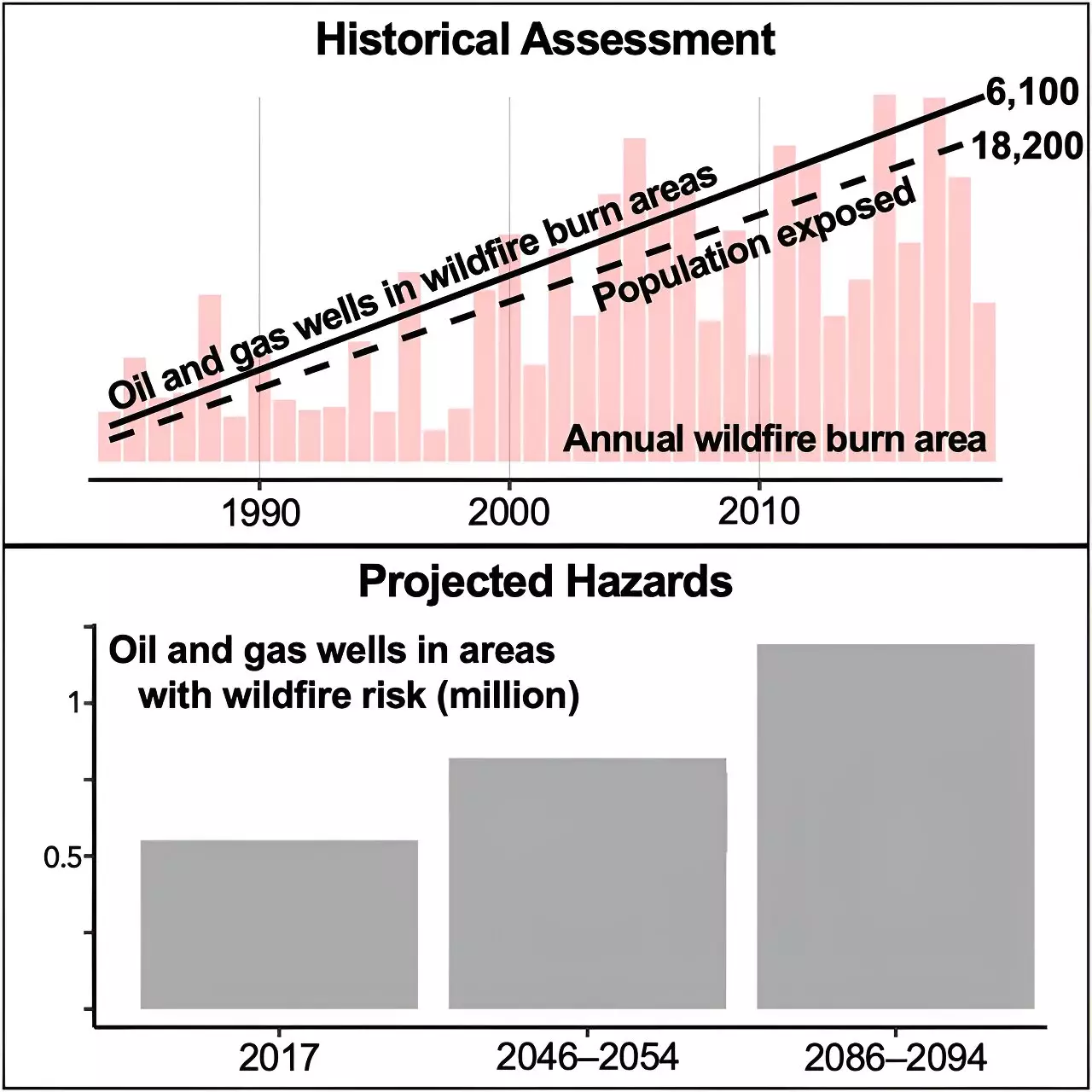A recent study by researchers from the University of California, Berkeley, sheds light on the alarming reality that more than 100,000 oil and gas wells across the western U.S. are located in areas that have been burned by wildfires in recent decades. This means that some 3 million people live in close proximity to wells that could potentially be in the path of fires exacerbated by climate change. The study, published in the journal One Earth, is the first of its kind to analyze the historical and projected wildfire threats on oil and gas facilities in the U.S.
The concentration of oil wells in California, particularly in areas that are highly susceptible to wildfires, raises concerns about public health and environmental justice. Los Angeles and Kern counties, for example, are not only home to significant oil and gas extraction activities but are also at high risk of burning due to wildfires. The proximity of these wells to residential areas poses a potential threat to the health and safety of the communities residing in these regions.
The study also highlights that Asian, Black, Hispanic, and Native American populations have faced disproportionately high exposure to wells located within burn zones. The impacts of megafires in states like California, Texas, and Oklahoma have further exacerbated the environmental injustices faced by these marginalized communities. This raises concerns about the equitable distribution of environmental risks and the need to address these disparities in policy and regulation.
Looking ahead, the number of wells in high-risk wildfire areas is expected to nearly double by the end of the century, indicating a growing threat to public health and safety. This trend suggests that more wells are being drilled in areas that are projected to experience an increased risk of burning in the coming decades. As such, it is imperative to consider the long-term implications of permitting wells in fire-prone regions and to implement measures to mitigate the potential hazards associated with these activities.
While the public health impacts of oil and gas drilling are increasingly recognized, there is limited research on the health effects of fires that burn oil and gas facilities. The combination of fire and drilling operations poses unexplored health risks, particularly in densely populated areas where buildings burn in intense wildfires. The release of volatile organic compounds from burning oil and gas facilities could further exacerbate health hazards and complicate fire response efforts.
To address these concerns, additional protections need to be put in place to safeguard the health and well-being of communities near oil and gas operations. Public land managers should also consider the long-term health effects and potential hazards of permitting wells in fire-prone areas. It is crucial to prioritize the safety of both the environment and the people living near these industrial activities to prevent further environmental degradation and public health risks.
The intersection of oil and gas wells, wildfires, and public health poses significant challenges that require immediate attention and action. By acknowledging the risks associated with drilling operations in high-risk wildfire areas and implementing proactive measures to address these threats, we can protect communities, promote environmental justice, and ensure a sustainable future for all.


Leave a Reply